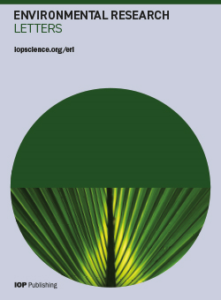- Department:(Dept. 1) Ecohydrology and Biogeochemistry
Seasonal differences in the attenuation of polar trace organics in the hyporheic zone of an urban stream
The authors investigated the attenuation of trace organic compounds (TrOCs) at a river influenced by treated wastewater during a sampling campaign in summer and one in winter. Contrary to their expectations, they found higher attenuation for 12 out of 18 TrOCs in winter, while three TrOCs were better attenuated in summer. Sediment conditions varied between seasons.
Disentangling the influence of landscape characteristics, hydroclimatic variability and land management on surface water NO3-N dynamics: spatially distributed modeling over 30 yr in a lowland mixed land use catchment
Our ability to quantify nitrate (NO3-N) fluxes and export at the catchment scale remain limited. The authors used long-term (30 yrs) NO3-N data in a mixed land-use, lowland catchment to investigate the long-term dynamics of hydrological and NO3-N fluxes, and key controlling factors. Landscape characteristics, hydroclimatic variability, and management practices were the dominant drivers for NO3-N.
Spatio-temporal variations in stable isotopes in peri-urban catchments: a preliminary assessment of potential and challenges in assessing streamflow sources
The authors used isotope tracers and water quality measurements, hydrometric and climatic data to investigate seasonal changes in water sources in the River Erpe. Downstream, flows were dominated by effluent from a large wastewater treatment plant, especially in summer. They gained new insights into how lowland, peri-urban catchments with complex land use function hydrologically.
Hydroclimatic variability and riparian wetland restoration control the hydrology and nutrient fluxes in a lowland agricultural catchment
The authors assessed the long-term (30yrs) changes in climate, discharge, groundwater levels and stream water quality in a mixed land use catchment. Climatic variability strongly influenced the catchment’s hydrology, while nutrient dynamics were primarily controlled by intrinsic solute characteristics. Riparian management was critical in modulating hydrological and nutrient variations.
The world's largest heliothermal lake newly formed in the Aral Sea basin
This survey on the seasonal thermal and mixing regime in a hypersaline basin of the Aral Sea revealed a newly formed two-layered structure with strong gradients of salinity and water transparency at mid-depths. As a result, the Chernyshev has evolved to an unprecedently large (∼80 km2) heliothermal lake accumulating solar energy in the subsurface temperature maximum with temperatures up to 37 °C.
Attribution of global lake systems change to anthropogenic forcing
The authors have uncovered the human imprint on lakes worldwide using hindcasts and projections from five lake models. Reanalysed trends in lake temperature and ice cover in recent decades are extremely unlikely to have occurred without the warming effect of rising greenhouse-gas emissions and implicate decline of ice thickness and duration worldwide.
Changing pattern of water level trends in eurasian endorheic lakes as a response to the recent climate variability
To address the large-scale patterns of hydrological response to the climate change, we investigated the variability of levels in 15 Eurasian lakes. Satellite altimetry revealed a heterogeneous pattern among different regions of the worldwide largest endorheic area: lake levels increased significantly in Central Asia and the Tibetan Plateau but decreased on the Mongolian Plateau.
An automatic method to detect lake ice phenology using MODIS daily temperature imagery
The authors developed a new method of satellite data processing for lake ice determination and applied it to investigation of ice regime on Chinese lakes. The method allowed to obtain estimates of the climate driven trends in ice phenology including the duration of transitional periods of partial ice coverage.
Carbon dioxide fluxes increase from day to night across European streams
The authors' aim was to evaluate the magnitude and drivers of stream CO2 flux variations at the water-air interface between day and night across European streams. The majority of streams had higher CO2 fluxes during night. However, no consistent driver could be identified across streams. Measuring night-time fluxes is necessary to not underestimate global CO2 emissions from inland waters.
Abundance and biogeography of methanogenic and methanotrophic microorganisms across European streams
The authors aimed at describing community composition of methanogenic and methanotrophic microorganisms at large spatial scale and at linking their abundances to potential sediment methane production and oxidation rates. Diversity of methanogenic archaea was higher in warmer streams and diversity of methanotrophic communities was higher at southern sampling sites and in larger streams.








